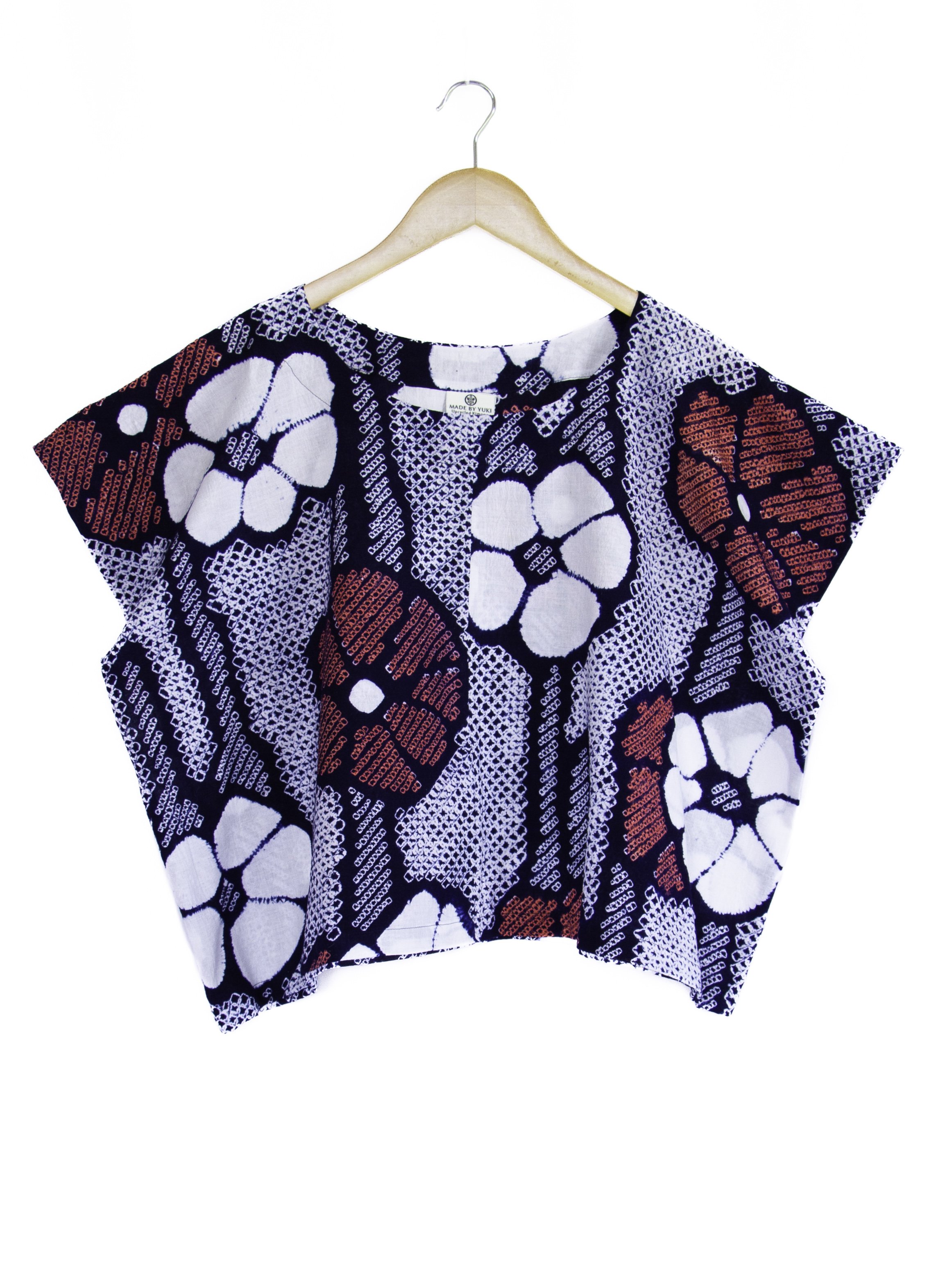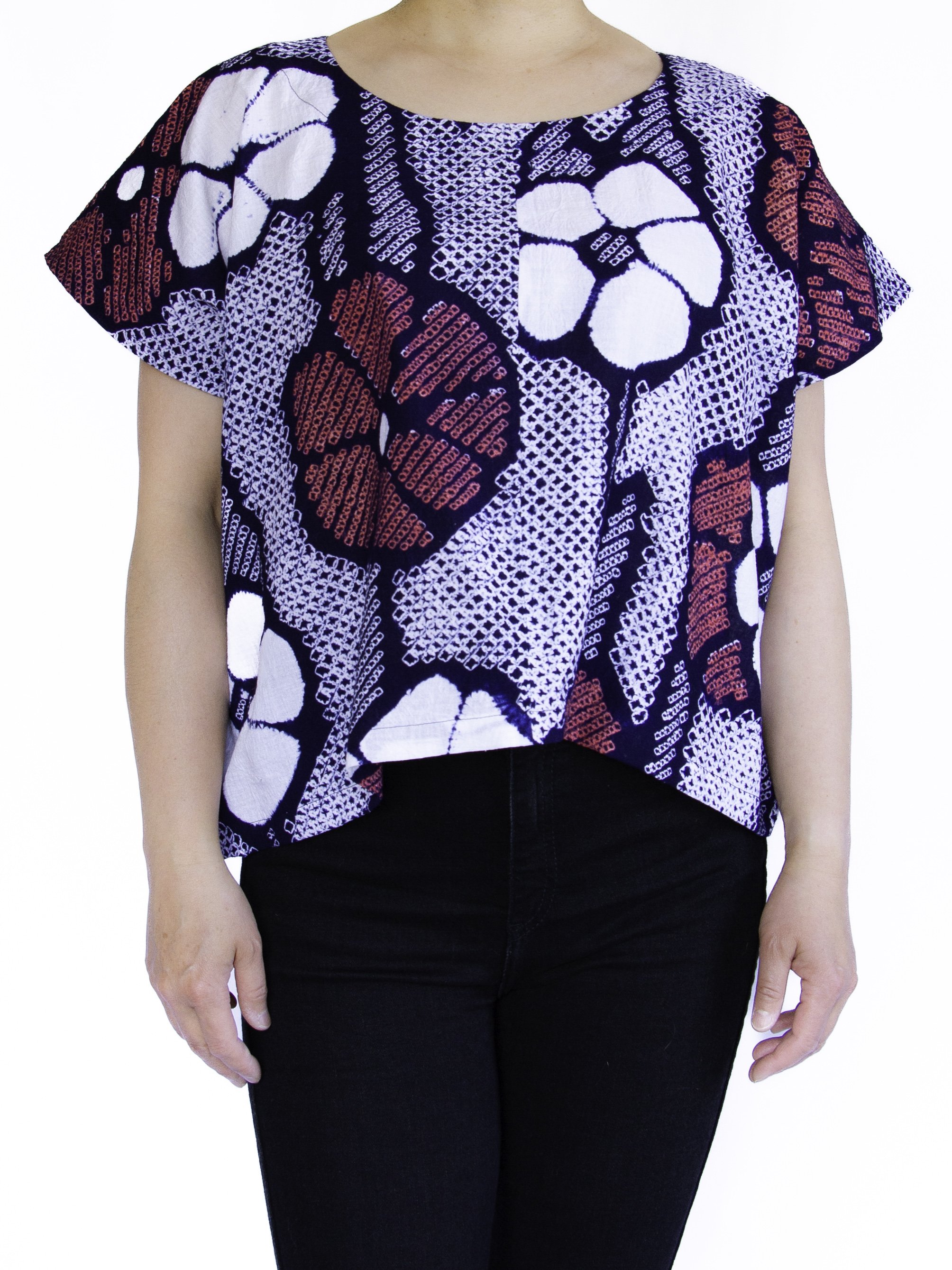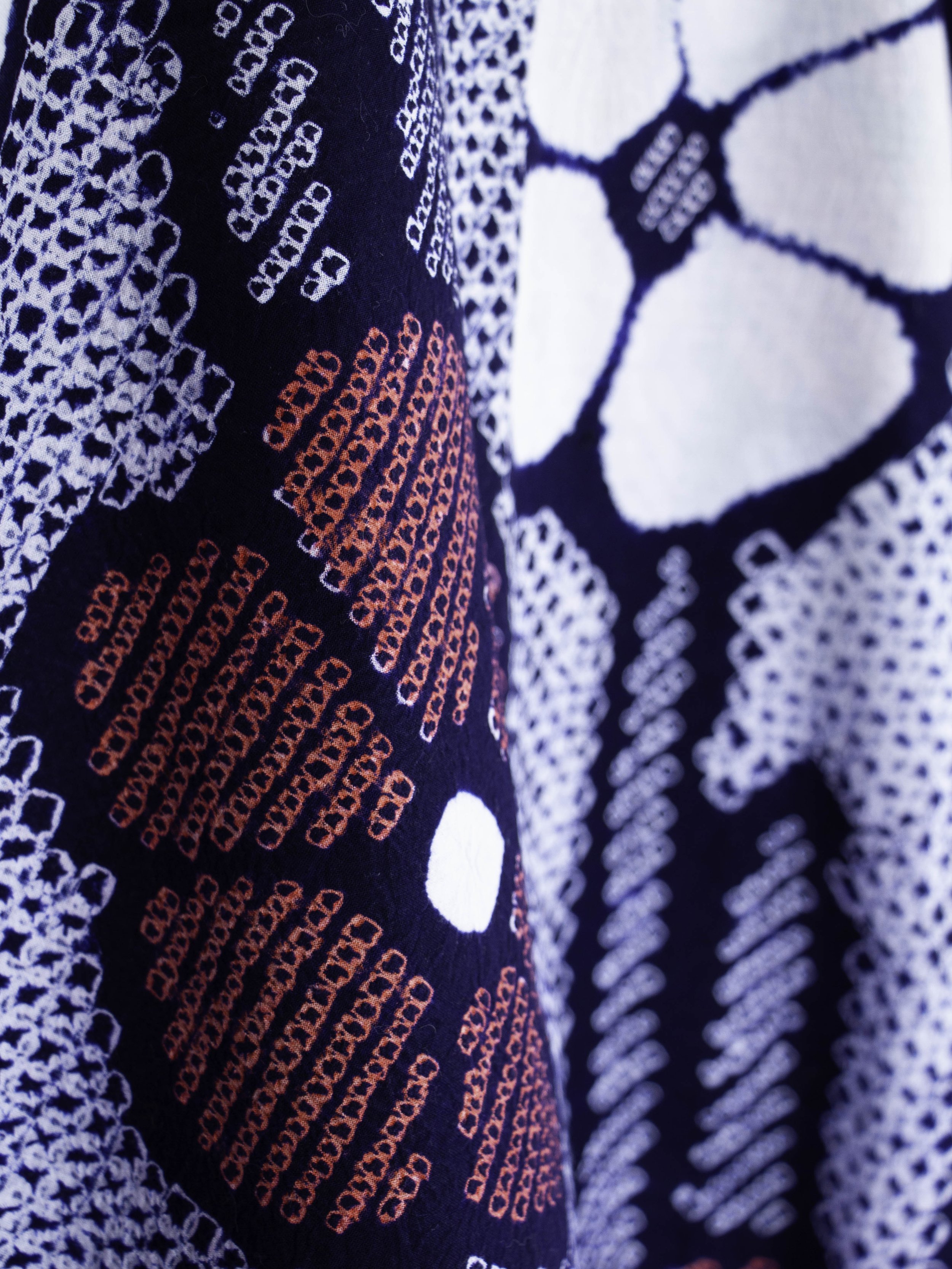 Image 1 of 4
Image 1 of 4

 Image 2 of 4
Image 2 of 4

 Image 3 of 4
Image 3 of 4

 Image 4 of 4
Image 4 of 4





Arimatsu Shibori Vintage Yukata Top
This top is made from a vintage Arimatsu Shibori Yukata. Arimatsu is located in Aichi prefecture, and has a 500 year history of a unique style of Shibori dye technique on cotton, which is typically made into Yukata - cotton Kimonos worn in summer. Shibori was originally for the poor. In feudal Japan, most people could not afford expensive silk, so clothes were often made from hemp or cotton fabrics. For those who could not afford to replace clothes regularly, dyeing was used to cover up stains. Now, Shibori is widely used to dye silks as well as cottons, and each region has a distinctive look. Arimatsu remains the most famous for Shibori dyed cottons that are used for Yukatas.
Flat garment measurements
Width: 70cm / 27.5 in
Length: 52cm / 20.5 in
Fits up to US 16
100% cotton
Hand wash in cold water. Squeeze out water gently, do not wring. Hang or lay flat to dry.
Pattern placement may vary slightly
This top is made from a vintage Arimatsu Shibori Yukata. Arimatsu is located in Aichi prefecture, and has a 500 year history of a unique style of Shibori dye technique on cotton, which is typically made into Yukata - cotton Kimonos worn in summer. Shibori was originally for the poor. In feudal Japan, most people could not afford expensive silk, so clothes were often made from hemp or cotton fabrics. For those who could not afford to replace clothes regularly, dyeing was used to cover up stains. Now, Shibori is widely used to dye silks as well as cottons, and each region has a distinctive look. Arimatsu remains the most famous for Shibori dyed cottons that are used for Yukatas.
Flat garment measurements
Width: 70cm / 27.5 in
Length: 52cm / 20.5 in
Fits up to US 16
100% cotton
Hand wash in cold water. Squeeze out water gently, do not wring. Hang or lay flat to dry.
Pattern placement may vary slightly
This top is made from a vintage Arimatsu Shibori Yukata. Arimatsu is located in Aichi prefecture, and has a 500 year history of a unique style of Shibori dye technique on cotton, which is typically made into Yukata - cotton Kimonos worn in summer. Shibori was originally for the poor. In feudal Japan, most people could not afford expensive silk, so clothes were often made from hemp or cotton fabrics. For those who could not afford to replace clothes regularly, dyeing was used to cover up stains. Now, Shibori is widely used to dye silks as well as cottons, and each region has a distinctive look. Arimatsu remains the most famous for Shibori dyed cottons that are used for Yukatas.
Flat garment measurements
Width: 70cm / 27.5 in
Length: 52cm / 20.5 in
Fits up to US 16
100% cotton
Hand wash in cold water. Squeeze out water gently, do not wring. Hang or lay flat to dry.
Pattern placement may vary slightly
